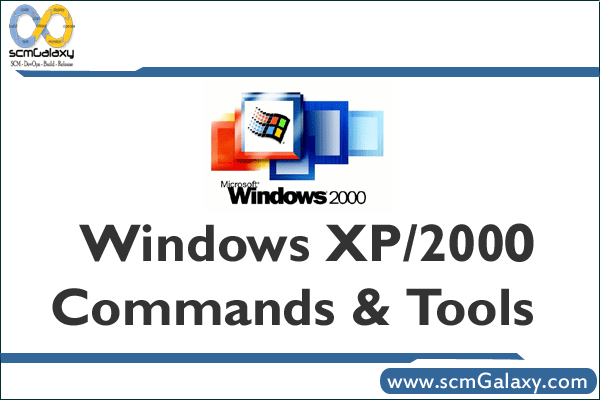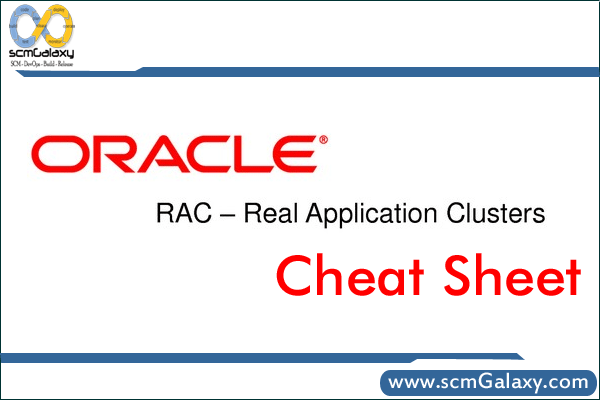
Tag: CheatSheet
Chef Commands Line Reference | Chef Commands Line Guide | Cheatsheet

To run single recipe using chef-solo
> chef-solo -c /opt/chef/repo/config/solo.rb -o my_cookbook::recipeTo run the single reciepe in same machine
> chef-apply hello.rb
To generate the cookbook standard structure
> chef generate cookbook learn_chef_httpd
> knife cookbook create smartmontools -r md
To generate the template file in cookbook
> chef generate template learn_chef_httpd index.html
To run the cookbook in local mode
> sudo chef-client --local-mode --runlist ‘recipe[learn_chef_httpd]’
To download the cookbooks from market place
> knife cookbook site download learn_chef_httpd
> knife cookbook site install learn_chef_httpd
To Upload the cookbooks to chef server
> knife cookbook upload learn_chef_httpd
> knife cookbook upload -a
To bootstrap a nodes
> knife bootstrap {{address}} --ssh-user {{user}} --ssh-password '{{password}}' --sudo --use-sudo-password --node-name node1 --run-list 'recipe[learn_chef_apache2]'
> knife bootstrap uvo1t75faaktzc532w6.vm.cld.sr -x root -P Br356YS0iy –sudo –node-name firefox
> knife bootstrap 123.45.6.789 -x username -P password –sudo
To see the list of nodes
>knife node list
To edit the node run list
> knife node edit name_of_node
To see the info about each nodes
> knife node show node1
Run the cooksbooks on nodes
> knife ssh {{address}} 'sudo chef-client' --manual-list --ssh-user {{user}} --ssh-password '{{password}}'
> ssh username@ipadddress -i mycredentials.pem sudo chef-client
To add the run list to the nodes.
knife node run_list add C2445575914.domain 'recipe[hptrain]'
knife node run_list set test-node '''recipe[iptables]''' [Windows - Powershell]
knife node run_list set test-node 'recipe[iptables]' [Windows - Command]
Oracle RAC Cheat Sheet | Oracle RAC Guide | Oracle RAC Reference
Check CRS Status
[root@racnode1 ~]#crsctl check crs
Check Clusterware Resources
[root@racnode1 ~]# crs_stat -t -v
Stopping the Oracle Clusterware Stack on the Local Server
[root@racnode1 ~]# /u01/app/11.2.0/grid/bin/crsctl stop cluster
CRS-2673: Attempting to stop 'ora.crsd' on 'racnode1'
...
...
Stop Oracle Clusterware stack on all servers in the cluster
[root@racnode1 ~]# crsctl stop cluster -all
Starting the Oracle Clusterware Stack on the Local Server
[root@racnode1 ~]# /u01/app/11.2.0/grid/bin/crsctl start cluster
CRS-2673: Attempting to start 'ora.crsd' on 'racnode1'
...
...
Start Oracle Clusterware stack on all servers in the cluster
[root@racnode1 ~]# crsctl start cluster -all
Check Cluster Nodes
[oracle@racnode1 ~]$olsnodes -n
Confirming Oracle ASM Function for Oracle Clusterware Files
If you installed the OCR and voting disk files on Oracle ASM, then use the following command syntax as the Grid Infrastructure installation owner to confirm that your Oracle ASM installation is running:
[oracle@racnode1 ~]$srvctl status asm -a
Check Oracle Cluster Registry (OCR)
[oracle@racnode1 ~]$ocrcheck
Check Voting Disk
[oracle@racnode1 ~]$crsctl query css votedisk
Check Status Oracle Enterprise Manager
[oracle@racnode1 ~]$emctl status dbconsole
Start Oracle Enterprise Manager
[oracle@racnode1 ~]$emctl start dbconsole
Stop Oracle Enterprise Manager
[oracle@racnode1 ~]$emctl stop dbconsole
All Oracle Instances – (Database Status)
[oracle@racnode1 ~]$ srvctl status database -d racdb
Single Oracle Instance – (Status of Specific Instance)
[oracle@racnode1 ~]$ srvctl status instance -d racdb -i racdb1
Start/Stop All Instances with SRVCTL
[oracle@racnode1 ~]$ srvctl stop database -d racdb
[oracle@racnode1 ~]$ srvctl start database -d racdb
Node Applications – (Status)
[oracle@racnode1 ~]$ srvctl status nodeapps
Node Applications – (Configuration)
[oracle@racnode1 ~]$ srvctl config nodeapps
List all Configured Databases
[oracle@racnode1 ~]$ srvctl config database
Database – (Configuration)
[oracle@racnode1 ~]$ srvctl config database -d racdb -a
ASM – (Status)
[oracle@racnode1 ~]$ srvctl status asm
ASM – (Configuration)
[oracle@racnode1 ~]$srvctl config asm -a
TNS listener – (Status)
[oracle@racnode1 ~]$ srvctl status listener
SCAN – (Status)
[oracle@racnode1 ~]$ srvctl status scan
SCAN – (Configuration)
[oracle@racnode1 ~]$ srvctl config scan
VIP – (Status of Specific Node)
[oracle@racnode1 ~]$ srvctl status vip -n racnode1
[oracle@racnode1 ~]$ srvctl status vip -n racnode2
VIP – (Configuration of Specific Node)
[oracle@racnode1 ~]$ srvctl config vip -n racnode1
[oracle@racnode1 ~]$ srvctl config vip -n racnode2
Configuration for Node Applications – (VIP, GSD, ONS, Listener)
[oracle@racnode1 ~]$ srvctl config nodeapps -a -g -s -l
Verifying Clock Synchronization across the Cluster Nodes
[oracle@racnode1 ~]$ cluvfy comp clocksync -verbose
Windows XP/2000 Commands & Tools | Windows XP Command-line Reference

Here’s the ultimate Windows XP/2000 command list that will make any Linux user feel at home at the command prompt. A lot of these commands are intended for administrating a network, but they are great for savvy home users as well. We even listed which OS you need for these commands.
Many thanks to the digg users who ‘dugg’ our site and care to leave comments of helpful commands that we have left out!
- at (windows XP/2000)
Scheduling utility. - bootcfg (XP only)
This utility allows you to set up your boot options, such as your default OS and other loading options. - cacls (XP, 2000, & NT4.0)
Changes the ACLs (security Settings) of files and folders. Very similar to chmod in Linux. - comp (XP & 2000)
This utility is very similar to diff in Linux. Use the /? switch to get examples of command usage. - contig (works with NT4.0 and newer)
A great defrag utility for NTFS partitions. - control (XP only) – unpublished!
Allows you to launch control panel applets from the command line. control userpasswords2, for example will launch a helpful local user admin utility. - defrag (XP only – NT4.0 and Win2k use contig)
Yes, XP comes with a command line disk defrag utility. If you are running Win2k or NT4.0 there is still hope. Contig is a free defrag program that I describe on the defrag page. - diskpart (XP only)
Use this command to manage your disk partitions. This is the text version for the GUI Disk Manager. - driverquery (XP only)
Produces a list of drivers, their properties, and their versions. Great for computer documentation. - eudcedit (XP only) – unpublished!
Private Character editor. Yes with this program built into Windows XP you can create your own font! - fsutil (XP only) – unpublished!
This is a utility with a lot of capability. Come back soon for great examples. - getmac (XP & 2000)
This command gets the Media Access Control (MAC) address of your network cards. - gpresult (XP & 2000)
This generates a summary of the user settings and computer group policy settings. - gpupdate (XP only)
Use this utility to manually apply computer and user policy from your windows 2000 (or newer) domain. - ipconfig (XP, 2000 & NT4.0)
This handy tool displays IP settings of the current computer and much more. - MMC (XP, 2000 & NT4.0) – Microsoft Management Console
This is the master tool for Windows, it is the main interface in which all other tools use starting primarily in Windows 2000 and newer systems. - more
Utility used to display text output one screen at a time. Ex. more c:\windows\win.ini - msconfig (XP only)
The ultimate tool to change the services and utilities that start when your Windows machine boots up. You can also copy the executable from XP and use it in Win2k. - msinfo32 (XP &smp; 2000)
An awesome diagnostic tool. With it you can get a list of running processes, including the residing path of the executable (great for manually removing malware) and get detailed information about hardware and system diagnostics. - narrator (XP only)
Turns on the system narrator (can also be found in accessibility options in control panel). Will will allow your computer to dictate text to you. - netsh (XP & 2000)
A network configuration tool console. At the ‘netsh>’ prompt, use the ‘?’ to list the available commands and type “exit” to get back to a command prompt. - nslookup (all)
A DNS name resolution tool. - openfiles (XP Only)
Allows an administrator to display or disconnect open files in XP professional. Type “openfiles /?” for a list of possible parameters. - Pathping (XP & 2000)
A cross between the ping and traceroute utilities. Who needs Neotrace when you can use this? Type “pathping <ip address>” and watch it go. - recover (XP & 2000)
This command can recover readable information from a damaged disk and is very easy to use. - reg (XP & 2000)
A console registry tool, great for scripting Registry edits. - sc (XP & 2000)
A command line utility called the Service Controller. A power tool to make service changes via a logon/logoff or startup/shutdown script. - schtasks (XP only)
A newer version of the AT command. This allows an administrator to schedule and manage scheduled tasks on a local and remote machines. - secedit (XP & 2000)
Use this utility to manually apply computer and user policy from your windows 2000 (or newer) domain. Example to update the machine policy: secedit /refreshpolicy machine_policy /enforce
To view help on this, just type secedit.
NOTE: In Windows XP SP1 and news, this command is superceded by: gpupdate /force - sfc (XP & 2000)
The system file checker scans important system files and replaces the ones you (or your applications) hacked beyond repair with the real, official Microsoft versions. - shutdown (XP & 2000)
With this tool, You can shut down or restart your own computer, or an administrator can shut down or restart a remote computer. - sigverif (XP only)
Microsoft has created driver signatures. A signed driver is Microsoft tested and approved. With the sigverif tool you can have all driver files analyzed to verify that they are digitally signed. Just type ‘sigverif’ at the command prompt. - systeminfo (XP only)
Basic system configuration information, such as the system type, the processor type, time zone, virtual memory settings, system uptime, and much more. This program is great for creating an inventory of computers on your network. - sysedit (XP/2000)
System Configuration File Editor. An old tool that was very handy for the Windows 9X days. msconfig is what you want to use now. - tasklist (XP pro only)
Tasklist is the command console equivalent to the task manager in windows. It is a must have when fighting scumware and viruses. Try the command:
tasklist /svc
to view the memory resources your services take up. - taskkill (XP only)
Taskkill contains the rest of the task manager functionality. It allows you to kill those unneeded or locked up applications. - tree (XP & 2000)
An amazing experience everyone should try! This command will provide a ‘family tree’ style display of the drive/folder you specify. - WMIC (XP & 2000)
Windows Management Instrumentation Command tool. This allows you to pull an amazing amount of low-level system information from a command line scripting interface.
